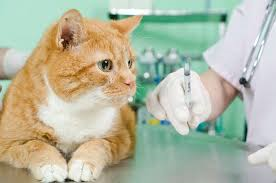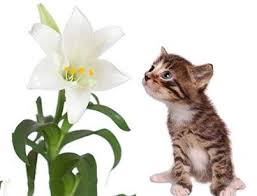
Cats love nothing better than to lay in sunny spots around their homes. Catching a few morning rays, they are the picture of ultimate relaxation. But, as the summer heat starts to kick in and temperatures start to climb, cats are going to be exposed to the dangers of heat stroke (hyperttheirmia). They will instinctively search for cooler spots to spend their time. Their are some ways in which you can help your cat beat the heat and make their life bearable during the hot weather.
Invest in large, shady potted plants. Make sure they will provide ample shade for your cat. Check with your local vet to ensure they are not toxic.
Provide cat with cooler places to lie down.
If feasible, keep your air conditioner or cooler running throughout the day for the ultimate in comfort.
Leave your plug out of your sink and turn on the water just to a trickle. The noise of the water will bring cat in to investigate. They will play with the water.
Instead of giving ice water to your cat on hot days, which can worsen the situation simply provide them with clean, cool water daily.
Your cat may start panting. This is their first attempt to maintain their body temperature. They will also start to over-groom themself in an attempt to lower their body temperature. Once the saliva dries on their fur, they will begin to cool down.
You may notice when they walks across a tile floor, you will see moist paw prints left. Cats sweat through their foot pads. If your home is hot, and you don’t see moist paw prints, that should raise concern.
They may dig a large hole in their litter pan and park themself inside. Cats are originally desert-dwelling creatures. They instinctively know that the sand will bring welcome relief.
To provide relief to your cat keep your curtains or blinds closed in the daytime. Plus, you can leave your windows wide open as well and your cat can’t escape.
If you allow your cat access to your balcony be sure the balcony is properly screened so they can’t fall off. Place large potted plants around the balcony to provide shade, or use inexpensive screens to create a shady cave for your cat.
You can check for dehydration by:
Checking your cat’s mouth. Press your finger lightly against their gums (which should be pink and happy) Your print should leave an impression for about a second then the gums pink up again. If they stay pale, or appear streaked or white, get cat to the vet now.
You can also check for dehydration, while yourcat is at rest, gently pick up the scruff of their neck, without lifting their body. Pinch the scruff lightly, release. The skin should fold down within seconds. If it remains in a pinched position- get your cat to the vet!
Summer is a time of relaxation and fun. But as the warmer months approach, be on the alert for any heat- related problems. If you find that your cat is in the middle of heat stroke, place a cool wet towel around your cat while they are being transported to the vet. If you put them inside a carrier for transport, be sure and place them on a cool, wet towel to help lower their body temperature.

www.animalemergency.com.au








